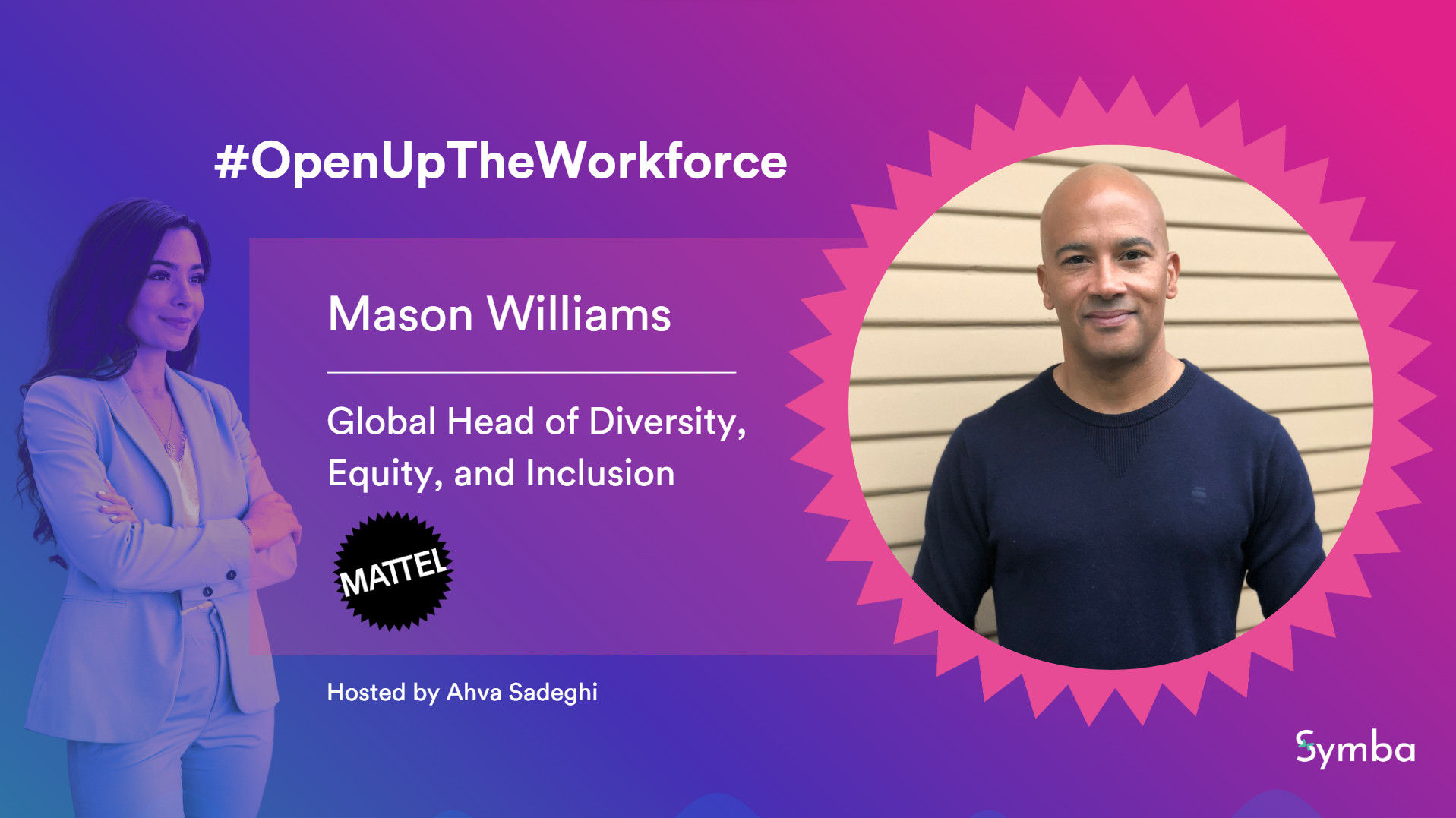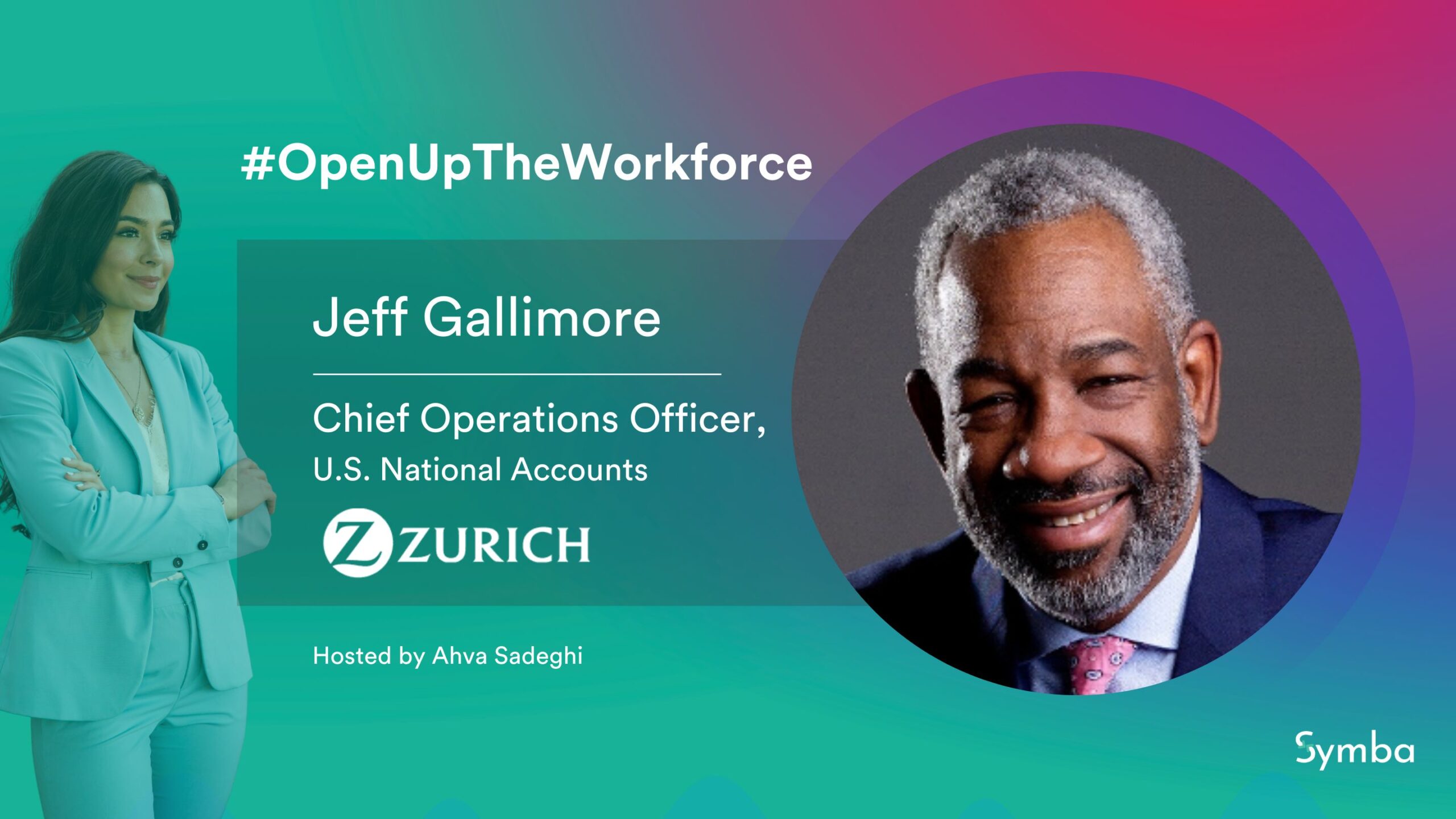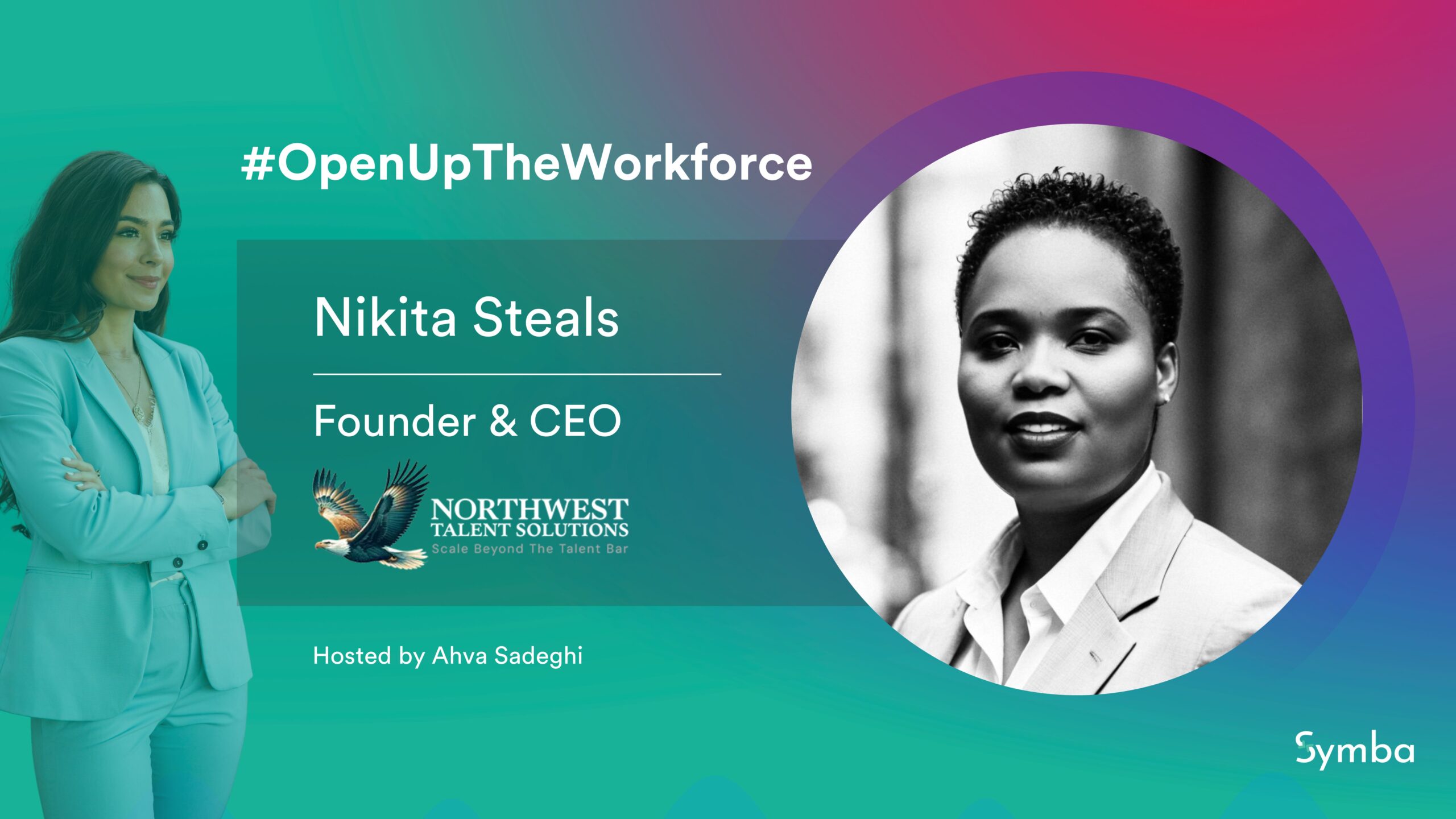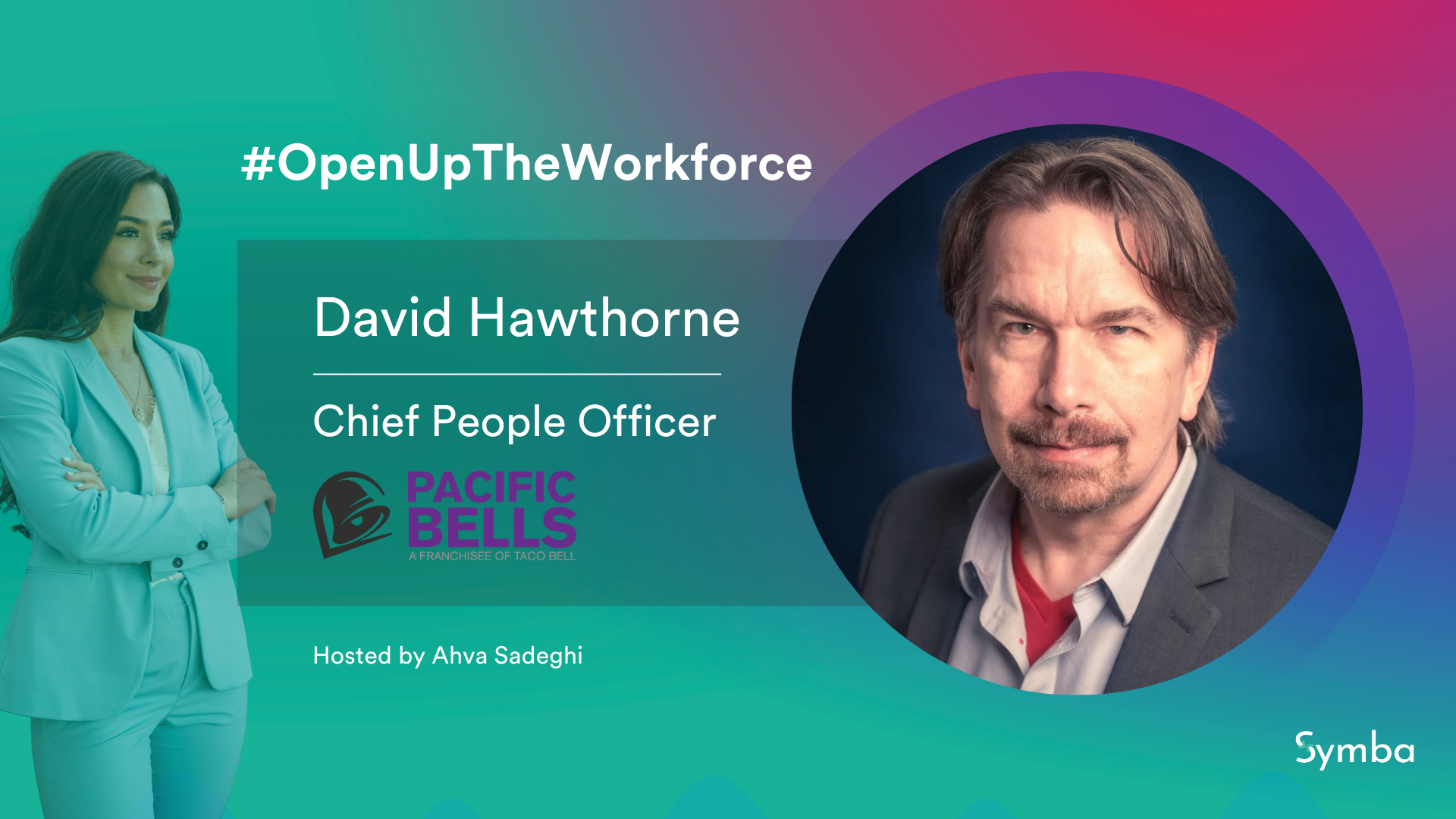Presented by Symba, #OpenUpTheWorkforce interviews feature executives advancing inclusion, diversity, and equity for the future of work. In these short audio-only episodes, host Ahva Sadeghi speaks with top leaders about what it takes to develop and implement inclusive processes.
In this episode of #OpenUpTheWorkforce, Ahva speaks to Mason Williams, the Global Head of Diversity, Equity, and Inclusion at Mattel Inc. Mason started his Mattel career as an online game designer, later transitioning to the connected play division from 2011 to 2021. Afterward, he made a significant career shift into DEI, which he sees as the next phase of his creative output. Get the inside scoop on the making of the global blockbuster movie Barbie, read how Mattel leverages employee resource groups in their toy design processes, and find out what Mason thinks about how to truly open up the workforce. Listen to the whole episode here!
Barbie: Behind the Scenes
Mason delves into the history and evolution of Barbie, emphasizing how the initial concept was to create an aspirational figure, in contrast to the limited roles traditionally designed for girls' toys. He discusses the various phases of Barbie's evolution, from representing diverse career paths to facing criticism related to body image and societal beauty standards. He highlights the importance of this progression, noting that it reflects social responsibility and the need for continuous improvement. Mason praises the current inclusivity showcased, which introduced various body types, hairstyles, and skin tones, leading to the culmination of Barbie's significance in the movie. Mason expresses appreciation for the journey that involved critiques, emphasizing that personal growth and the ability to transcend past limitations are worth celebrating.
Inclusion Drives Innovation
Mattel views diversity, equity, and inclusion (DEI) as a central role in their business strategy, not merely as an HR initiative. Mason explains how incorporating diverse representation broadens the market by enabling more consumers to see themselves in the products. Mattel focuses on the principle of designing with people rather than for people, highlighting the importance of involving diverse communities in the design process, both internally and externally.
Diversity and inclusivity lead to enhanced collaboration, execution, and innovation, helping align Mattel’s focus with the needs and preferences of its diverse consumer base. Mason highlights the benefits of this strategy, such as attracting and retaining exceptional talent within the organization. He underscores that this approach is not merely transactional but mutually beneficial, fostering a positive and supportive environment for both employees and the company.
Mason asserts the value of including voices that might not typically have a platform for sharing their ideas, believing that such inclusivity leads to more innovation and groundbreaking concepts. He shares an example of Mattel’s global approach to sourcing ideas through initiatives like the virtual garage, which attracts toy designs from a diverse array of individuals worldwide.
Creating a Safe Environment for DEI Initiatives
Mason reflects on his upbringing and experiences that shaped his perspective on inclusivity and diversity. He recounts the challenge of being the only person of his background in certain environments, and how these experiences have contributed to his personal growth. He emphasizes the importance of learning to navigate such spaces and eventually being valued for individual merits rather than just representation. Mason advocates for a holistic approach to talent acquisition by encouraging individuals from diverse backgrounds to apply and broaden the talent pool. He promotes a culture of vulnerability, noting that leaders who share personal stories can foster a sense of connection and understanding within the workplace.
Engaging and sharing ideas can help enhance inclusivity in more workplaces. On this front, Mason discusses his involvement in various DEI conferences and events, sharing insights from his experiences at Mattel and within the toy industry. He also expresses his enthusiasm for learning from individuals in other industries, such as those in the aerospace and defense sectors. Mason advocates for an open approach to sharing information and experiences, likening it to the concept of open-source coding, encouraging others to adapt these insights for the betterment of their respective companies and initiatives.
The Future of Diversity
Employee resource groups (ERGs) have become important touchstones in DEI circles. Mason, who is also the president of the “Black at Mattel” ERG, addresses the challenges groups face, such as limited funding, which can impede their ability to make a significant impact. He emphasizes the importance of aligning the values and purpose of ERGs with those of the company, noting that when ERGs are perceived as thought partners, they can effectively influence the business.
At Mattel, for instance, there are 10 ERGs, each with a significant impact on the design process. Mattel has promoted ERG leaders as a result of their increased visibility and impactful contributions. Mason urges ERG leaders to remain patient yet persistent and focus on quality initiatives over quantity, recognizing that the journey toward impactful change is a long-term endeavor. He also stresses the significance of securing executive sponsors to help navigate potential obstacles.
DEI initiatives have received unexpected backlash following the US Supreme Court affirmative action decision. On his part, Mason envisions a future where diversity, equity, and inclusion are so deeply ingrained within the company culture that a designated DEI role will no longer be necessary. DEI needs to become an inherent part of a company’s functioning, seamlessly woven into the fabric of daily operations and decision-making processes. Mason counters the notion that DEI efforts lead to the exclusion of certain individuals, rather the goal is to add more voices to the conversation and ensure everyone feels valued and respected.
What Do You Believe Are the Next Steps Leaders Need to Take in Order to Truly Open up the Workforce?
To open up the workforce, Mason discusses the importance of opening up the recruitment funnel to welcome a more diverse pool of candidates. Certain outdated job requirements may be inadvertently disqualifying potentially excellent talent, and employers need to reassess hiring parameters.
Mason underscores the significance of investing in the relationships built through recruiting networks, college partnerships, and outreach programs, including initiatives like the Flip program at Mattel that targets black students in design and marketing. He highlights the success of these programs, illustrating how they have paved the way for students to transition into internships and eventually secure full-time positions at Mattel.
Mason emphasizes the importance of visibility and representation, recognizing that when individuals see others like themselves in positions of success, it inspires them to pursue similar paths. He advocates for a sustainable ecosystem that fosters a culture of inclusivity and opportunity within the organization.
About Mason Williams
People, purpose, and product are the most important focus areas in Mason Williams' role as Global Head of DE&I at Mattel. Empowering a diverse workforce within an inclusive culture of belonging creates the greatest opportunity to collaborate, innovate, and execute sustainable growth.
Mason joined Mattel in 2010 as a digital game designer/producer. He helped create Mattel's Connected Play team tasked with creating toys powered by digital technologies such as AR/VR, Bluetooth, and speech recognition. In 2021, Mason transitioned into his current role. DEI has been foundational for him as a person and a professional.





